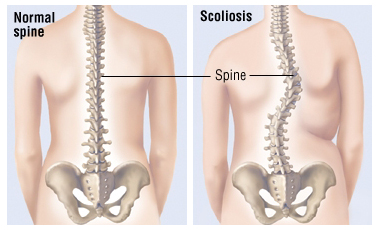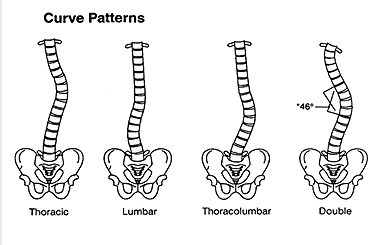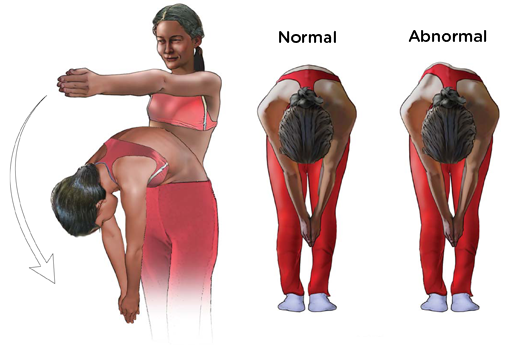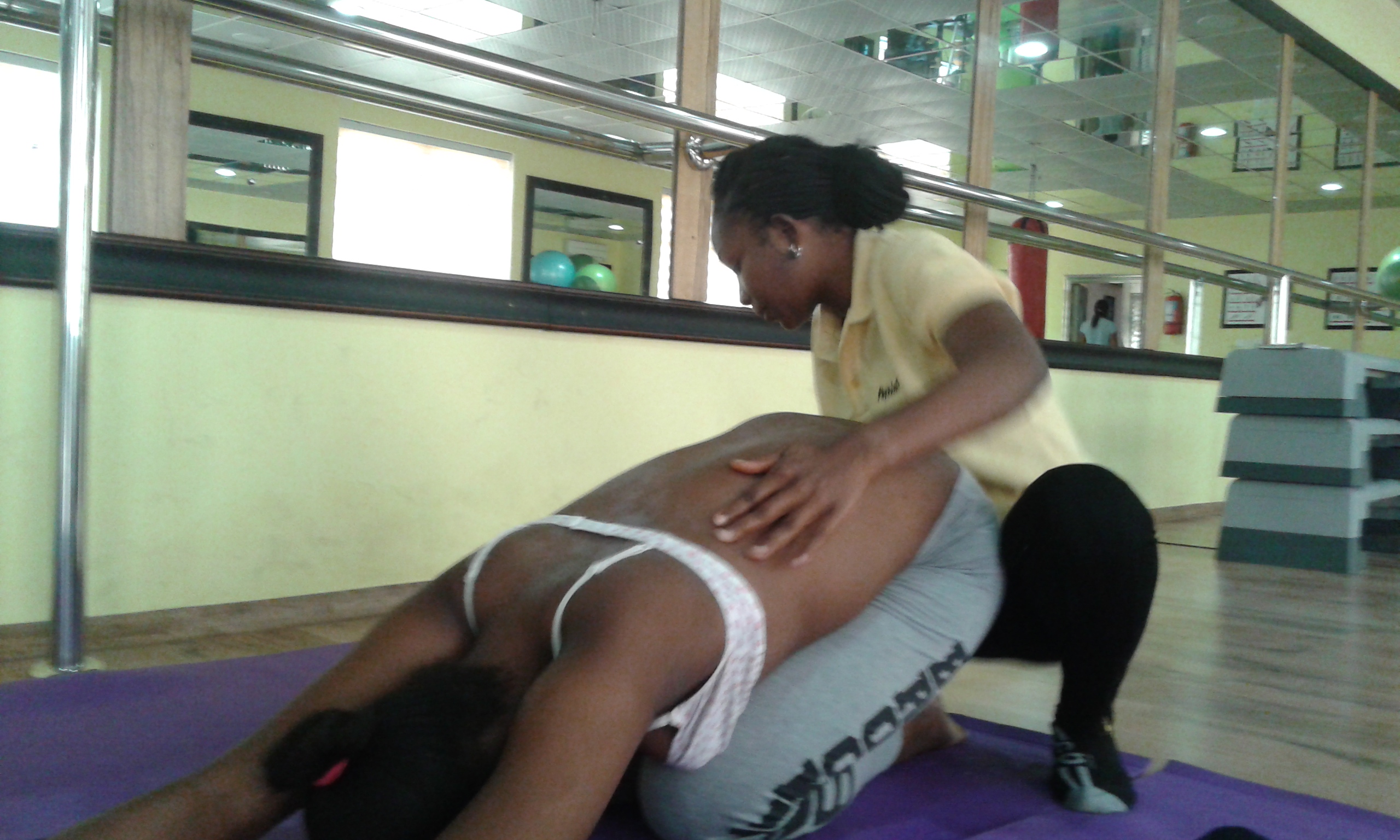What is scoliosis?
Scoliosis is a sideways curvature of the spine. The degree of curvature of the spine can vary from C-shape to an S-shape. Several people have a degree of curvature as but if the curve exceeds 10 degrees, a diagnosis of scoliosis is made. Scoliosis is more common in girls than in boys. Sometimes, a “wait and see” approach may be used when scoliosis is first observed because it may not progress further. During that period, scheduled checks are recommended and if it is progressing, intervention may be recommended.
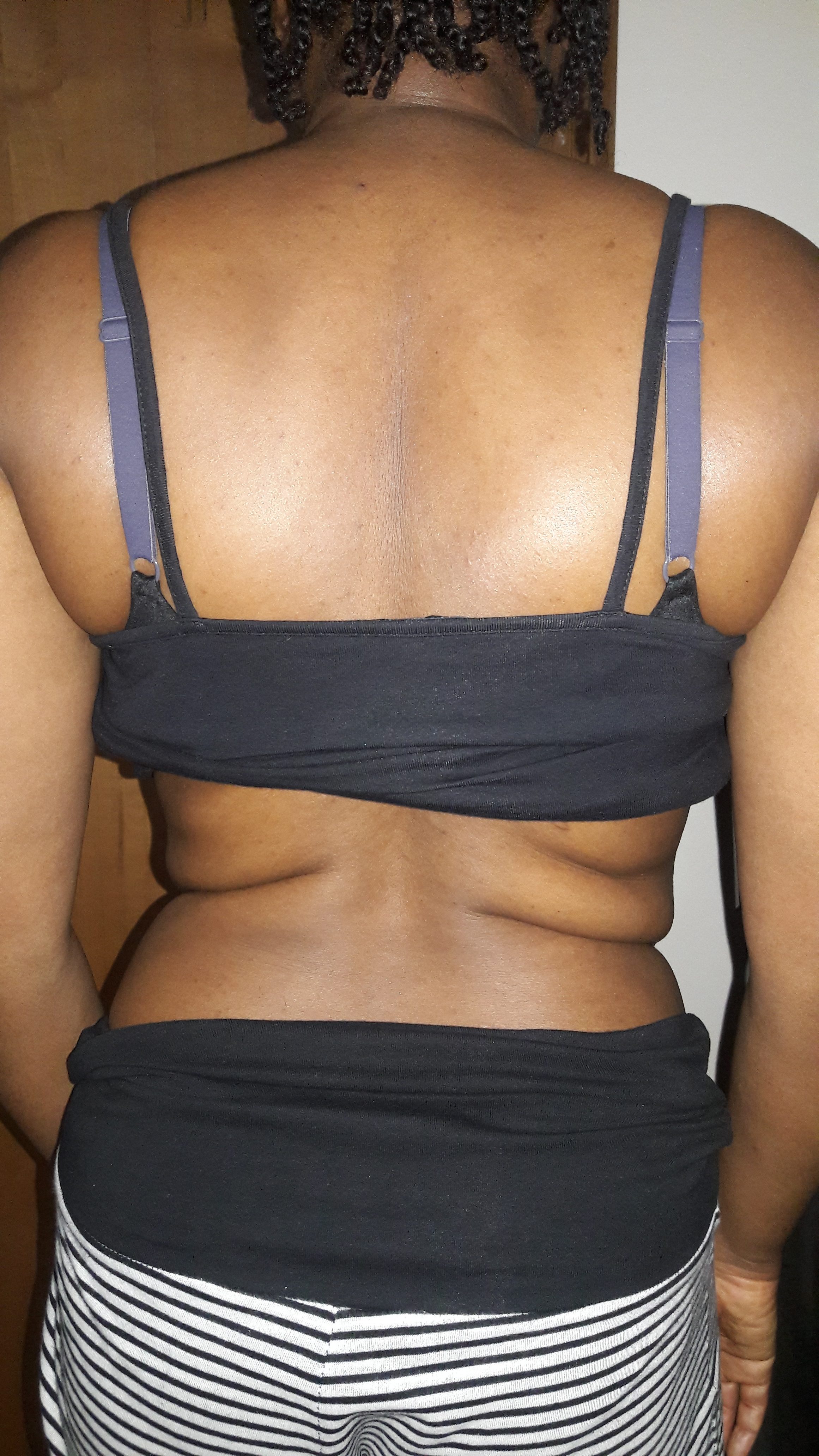
PhysioCraft client being assessed for scoliosis. Notice the extra folds on one side
What are the types of scoliosis?
Aside location of the curve, depending on the type of calssification, types od scoliosis are:
Idiopathic: Idiopathic means unknown. Most types of scoliosis (about 80-85%) fall in this category. Not much is known about what causes this though it tends to run in families. Idiopathic scoliosis can occur in children and adolescents or in adults. In children and adolescents, the scoliosis is commonly noticed by family or friends during sports or while dressing up or during routine check-ups in the hospital. In adult, Idiopathic scoliosis is a progression of scoliosis which initially occurred while younger. Adult scoliosis can also be a result of a degenerative spine that is, the vertebrae and the discs undergoing ageing cause the tilt in the spine.
Congenital scoliosis: Congenital scoliosis is when the cause of the scoliosis occurs before birth. For instance, vertebrae may not be completely formed or may be fused with another vertebrae and at birth, the scoliosis usually occurs with other complications involving the heart and kidneys.
Neuromuscular scoliosis: Neuromuscular refers to the type of scoliosis primarily caused by medical conditions affecting nerves and muscles which eventually lead to weakness or muscular imbalance. The most common type of such condition in Nigeria is cerebral palsy. Others are muscular dystrophy and marfan’s syndrome.
What causes scoliosis?
Except where specific developmental variations have been pin-pointed or medical conditions have been diagnosed, most causes of scoliosis aren’t known. Though in 30% of the identified cases, it has been observed that there is a family history of scoliosis, most times, the cause of scoliosis is unknown.
How is scoliosis diagnosed?
Physical observation usually provides a quick way of screening scoliosis. Symmetry of both sides (right and left) is a common indicator-
- Unequal shoulder height
- Shoulder blades being more prominent than the other
- Uneven hips, waist, legs or rib-cage
- Leaning/tilting to one side
- Sometimes, when bending forward, a curve/hump may be observed.
To check at home, have someone observe you while you do the following:
- Place feet and hands together
- Stretch hands forward
- Bend head/neck down and reach for the ground as far as you can go
If a bulge or hump is observed or if there is a difference in the hips or waist, further medical screening is recommended.
With the healthcare practitioner,
- Further physical examination may be required
- X-ray may be recommended. After X-rays, the degree of the curve of the spine (cobb’s angle) is measured and these in combination of symptoms and other determining factors, usually determines if intervention is recommended.
Symptoms of scoliosis
Symptoms vary on a case by case basis. Some people are asymptomatic, not having any symptoms through-out their entire lives. Others may have back pain and in the worst cases, there may be difficulty breathing, difficulty with diet and digestions, weakness and heart condition. In most cases, with correction of the curvature, the symptoms would be resolved or mitigated.
Treatment for scoliosis in Nigeria
Treatment is determined on a case-by case basis. Factors considered are:
- Age and if the client is still growing
- Location of the curve
- Severity of the curve
- How quickly the curve is progressing
Treatment options are:
Bracing-where the patient wears a custom-made (measures specifically for you) rigid shell to prevent the curve from progressing.
Spinal surgery (Fusion): a surgical procedure where metal rods are used to hold the spine straight with the aim of correction and minimising the progress. Surgery is usually recommended in cases where the curve is more than 40 degrees.
Physiotherapy- Physiotherapy treatment of scoliosis in Nigeria involves using conservative management and a combination of manual therapy, deep tissue stimulation, positioning, exercises, biofeedback, hydrotherapy and muscle lengthening, some types of scoliosis can either be stalled or reversed.
PhysioCraft experience with scoliosis varies with scoliosis in cerebral palsy, idiopathic scoliosis in adolescents and adult onset scoliosis due to degenerative spine disease. The team is constantly engaging in continuous learning programs to ensure that we are able to offer our clients up to date and custom-specific interventions. If you have any questions, call us on +2348035670888 or +2348171940921 and we’d be happy to answer your questions for free or direct you to specialists in the treatment of scoliosis in Nigeria. This service is available in our Lagos and Abuja locations only.

